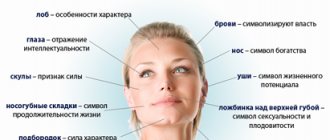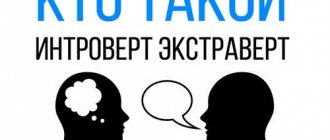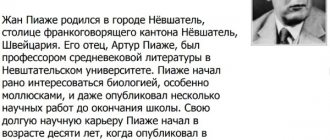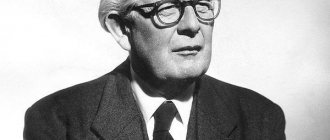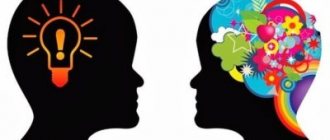Have you ever wondered why children in the same class learn the curriculum so differently? Or why, after graduating from the same language school, do children choose completely different professions? Of course, you say, everyone has different abilities. And you'll be right. But the point is not in the level of IQ, but in the direction of thinking and perception of the world.
In 1983, American psychologist Howard Gardner developed the theory of multiple intelligences. Based on his observations, Gardner came to the conclusion that instead of a single intelligence, a person has several different intellectual abilities. He writes about this in his world-famous book “The Structure of the Mind. The theory of multiple intelligences". There is also another translation of the title: “The Boundaries of Reason. The theory of multiple intelligences".
The theory of multiple intelligences
Harvard University professor and teacher of cognitive psychology Howard Gardner first mentioned multiple intelligences back in 1983. He believed that IQ is not the only true indicator of intelligence. For more than 20 years, studying adults and children of different ages, including gifted children, and analyzing their success in work and study, he put forward his theory - the theory of multiple intelligences. Over the course of many years of observations, Gardner noticed that some people find math problems easy, some like to play music, and some are closer to literature. So he concluded that different people absorb information and display talents and abilities differently and came to the understanding that IQ tests are not capable of comprehensively measuring a person’s mental abilities.
The theory of multiple intelligences states that different people have different leading types of intelligence. According to Professor Gardner's theory, there are nine of them: naturalistic, musical, logical-mathematical, linguistic-verbal, existential, interpersonal, intrapersonal, bodily-kinesthetic and visual-spatial, and each is responsible for different areas of our activity. Despite the fact that a person has all nine types, as a rule, one type of intelligence predominates, but several more can be quite developed.
Gardner's theory is popular among educators and school psychologists because it confirms their experience of children's different perceptions of information and learning abilities and allows them to find an individual approach to any student.
Conclusions based on Howard Gardner's theory
In conclusion, we emphasize that:
- All types of intelligence are interconnected and can be developed. By developing one ability, we will help develop other abilities adjacent to this one. Typically, children have well-developed two or three types of intelligence. Others need a little help to get involved. Some will require serious effort.
- The type of intelligence does not only indicate a person's abilities. It is also a clue as to what kind of learning style and methods are appropriate to best develop this ability.
- Using a way of learning that is convenient for us, we increase the effectiveness of learning many times over. By selecting tasks for your child, taking into account his characteristics, we help him not only learn new things, but also learn with joy.
- Poor grades at school do not indicate a child’s low intelligence and inability to learn. This is primarily an indicator of an underdeveloped education system.
- A student with poor grades has the same chances of success in the future as excellent students if he develops his type of intelligence.
- IQ tests cannot reliably assess a person's intelligence and abilities. Each of us is smart and developed in our field.
Gardner's theory of multiple intelligences shows the nature and mechanisms of our mind, how it interacts and develops under the influence of the surrounding reality. For now, this is only a theory, about which research is still underway, and which is still undergoing changes. But thanks to Howard Gardner, we can find out what type of intelligence we have and choose the right methods and methods of learning. And this is largely the key to success.
Determine the type of intelligence and awaken potential
As already mentioned, multiple intelligences are inherent in every person, with all nine types. The theory proposed by Gardner allows you to recognize the leading type of intelligence and unlock your potential. To achieve good results in your studies and then work effectively, you need to use as many types of intelligence as possible.
Remember Leonardo da Vinci and his outstanding spatial intelligence, but he used his capabilities in a comprehensive manner, which allowed him to achieve success in various fields of activity.
Types of intelligence can be developed, the more types are developed, the more effectively a person lives his life and achieves better results. In addition, a child, knowing his leading type of intelligence, will be able to accurately choose his future profession.
INTRODUCTION
Until recently, in theoretical studies devoted to the problem of intelligence, the point of view was accepted that intelligence is a general innate ability, to one degree or another inherent in each individual.
It can be quantitatively measured using tests, on the basis of which a conclusion is drawn about the further success of the individual. However, it was precisely the predictive value of such tests based on this approach that was called into question, to resolve which it turned out to be necessary, first of all, to reconsider the very concept of intelligence. Such an attempt was made by Howard Gardner, who proposed a radically new approach by recognizing the multiple nature of intelligence. The purpose of this work is to analyze the current state of the problem of intelligence research.
The object of this work is the study of intelligence.
What if we add more power?
By reading descriptions of types of intelligence, you can determine your leading type and those that are no less well developed, and pay attention to those that are in their infancy and require “refinement.” By following simple tips, you can develop types of intelligence that are currently weak.
- The development of verbal and linguistic intelligence will be helped by reading books and retelling them, as well as keeping a diary in which absolutely everything that interests you will be written down.
- Musical intelligence can be developed by singing, even if others think you have no voice or hearing. Both can be developed through singing. Listening to music, playing music and mastering a musical instrument also contribute to the development of musical intelligence.
- Logical-mathematical intelligence develops during games that require the use of strategy and logic: checkers, chess, dominoes or strategic games on the computer. Reading scientific magazines, watching scientific programs, and doing crossword puzzles also contribute to its development.
- Spatial intelligence is developed by visiting museums, galleries, exhibitions, viewing books with illustrations, studying design works and photographing the world around us.
- Bodily-kinetic intelligence can be developed during sports, as well as creativity associated with embroidery, drawing, and knitting. Meditation also contributes to its development. They will help you feel every part of your body and relax your muscles.
- Interpersonal (social) intelligence develops through communication. Its development is facilitated by new acquaintances, participation in volunteer projects, regular meetings with friends and conversations with family.
Not yet knowing about Gardner’s theory, teachers, observing their students every day, could determine each person’s abilities in a particular subject and supported their development by participating in children’s olympiads, competitions, and extracurricular activities. Now the theory of multiple intelligences is applied by teachers in practice; they not only determine the leading type of intelligence, but also try to develop the others. Of course, this does not happen in every school due to overcrowded classes.
But, for example, at ONLINE GYMNASIUM No. 1 they pay close attention to the personality of each student and their harmonious development.
- From the first day and for two weeks, the child is accompanied by an adaptation curator, who not only helps to get used to the new format of education, but also observes the child and analyzes his personality type.
- Further training is accompanied by a class curator, who also notices the strengths and weaknesses of students, helps them develop and successfully socialize.
- In the gymnasium, an individualized and flexible approach is used in the learning process, taking into account the psychological characteristics of children, including age. The developed competencies of teachers in this area make it possible to create a psychological and intellectual portrait of each child and build a personal vector of development, taking into account all the nuances.
- If you take advantage of the offer from the gymnasium and spend a free trial day in the classroom, you can see how this process goes and how students open up when the teacher works with their type of intelligence.
HOW TO APPLY THE THEORY TO AN INDIVIDUAL CHILD:
In fact, it is very difficult to find a place in the existing education system to implement the system and theory of Howard Gardner. The whole point is that general developmental programs developed and approved by the relevant authorities cannot be personality-oriented. In them, all children without exception are taught according to a template, without taking into account individual characteristics and more developed ways of perceiving new information. According to the author of the theory, the basic principle is that the educational process should be structured in such a way as to enable children to acquire experience and skills using various types of intelligence. The difficulty lies in the fact that it is very difficult for a teacher to remember and take into account simultaneously different learning styles, as well as the strengths and weaknesses of students during a lesson. In group classes, the verbal-linguistic type of intelligence is most often used. Teaching techniques such as lectures, writing on the board, writing papers, and note-taking are very important. Moreover, they are widely used in the education system, especially as students grow older. The task of educational institutions is the combination and integration of verbal-linguistic intelligence with other types. This will open up new and effective ways for your students to learn and experience. It is important to explain to children from an early age that they can reveal their abilities in various ways, in various types of activities. And in the future, all the necessary conditions for learning are created with an emphasis on the strengths and identified interests of children. Gardner's theory is being widely implemented in various educational and educational centers for child development, which are now being opened more and more often. There it is quite simple to do this, since there is a more serious material base, and the number of students in the group is small. This provides ample opportunities for implementing an individual-oriented approach to development. There are several ways to implement Howard Gardner's theory of multiple intelligences: - Group projects. Small groups are formed in which children perform special activities or work together on a specific project; — Individual projects. The proposed task should allow the individual child's abilities to be explored and developed in a way that suits him; — Creation of groups according to types of intelligence (center for creativity, mathematics, writing, etc.). The main purpose of such groups is to identify and develop discovered abilities. Also, training in such centers is very useful when children are introduced to different types of abilities; — Non-standard planning for studying a specific topic. The main goal of education according to Gardner’s theory is to give the child the opportunity to explore the world, study objects and phenomena in the way that is most close and convenient to him. The baby should feel comfortable in this method of learning. The same material should be presented in a variety of ways in the classroom to engage the maximum number of intelligence types. All centers, providing education to children, are based on generally accepted programs. But they allow kids to learn a topic based on their dominant intelligence types. So, while studying the history of the Egyptian pyramids, one group can build models of pyramids, another can stage a theatrical performance on the theme of Egyptian pharaohs and pyramids, a third can read a book on the history of ancient Egyptian pyramids with the whole class or group, etc. It is important that the centers are equipped accordingly. They must contain all the necessary materials for various types of activities, equipment, furniture. Howard Gardner emphasizes that the degree of development of a particular type of intelligence depends on the frequency of its use in life. The more often this happens, the more opportunities there are to form a certain type of intelligence in the future, the better it will develop. In fact, all types of intelligence are closely related to each other. By developing one, other related types will certainly develop. The average child has several types of intelligence that are well developed: there are several abilities that emerge and develop with ease, others that emerge with effort, and one or more that only emerge with great effort. To determine the percentage of development levels of certain types of intelligence, it is enough to pass a simple test that can be easily found on the Internet. As a result, you will see which abilities and interests are expressed more and which less. Parents, having noticed a child’s inclination towards any type of intelligence, should try to develop these abilities, as well as choose the appropriate methodology for this. It is important to choose the learning style that is ideal for your child. Then the child’s development will be as effective and joyful as possible.
Source: https://www.kroha.net/razvitie_rebenka/igri_i_metodiki/metodika_razvitiya_govarda_gardnera/
Visual-spatial intelligence
Responsible for imaginative thinking, the ability to imagine a complete picture of what is happening (as the writer William Golding said - “seeing inside the head”), remembering the colors and appearance of an object or phenomenon.
People who have developed this type of thinking love to draw, appreciate art, have a pronounced aesthetic taste and have a good memory for faces; They do not suffer from “geographical idiocy” due to the fact that they easily remember a place where they have already been once and easily navigate in space.
In drawing, they easily master perspective, see volume, highlights and reflexes. Of course, these are artists and graphic artists, as well as sculptors. In combination with mathematical knowledge, people with a developed “artistic vision” can easily master the profession of an architect or engineer and acquire the valuable ability to easily read maps and diagrams.
Eysenck tests are not suitable for objective assessment of a person’s level of intelligence
There is a popular point of view that an IQ test determines not so much the mental abilities and capabilities of the brain, but rather a person’s ability to learn in educational institutions.
Understanding intelligence in this test is based on logic and abstract thinking, so it is simply not able to take into account the rest of the brain. And not everyone needs the ability to solve logical problems, for example, artists, actors, athletes get along well with people, know how to negotiate and make important acquaintances, and have endurance and talents. However, the Eysenck test generally recognizes them as being able to “find the tenth grade with difficulty.”
“Brilliant idiots” is how such people are sometimes called in everyday life.
Natural or naturalistic intelligence
Responsible for communicating with nature, the ability to understand the natural instincts of plants, animals and humans.
People with a high level of natural intelligence have loved animals since childhood, can grasp the character of a particular pet, and love gardening. Such people will not get lost in the forest; they sense the mood of animals well and are attentive to the search for edible and medicinal plants.
Since ancient times, such intelligence was valued in the society of hunters and gatherers, and until now the choice of professions for the “natural intellectual” is very wide: hunter, biologist, doctor, agronomist, botanist, ecologist, trainer, and so on. In addition, those with high natural intelligence are, as a rule, excellent lovers who have a keen sense of their partner.



